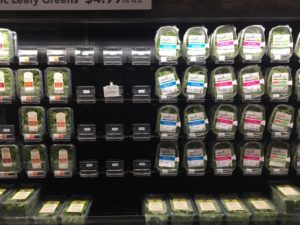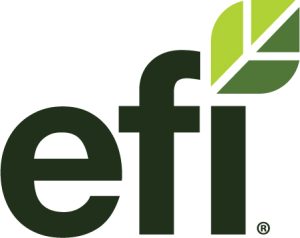The shockwaves that hit the produce industry in 2018 were unforgettable, marking one of the most dramatic food safety crises in history. News broke from the Centers for Disease Control and Prevention (CDC) the day before Thanksgiving alerting consumers to avoid all romaine lettuce after the second major E. coli outbreak that year. The fallout was swift and severe, resulting in emptied produce shelves and warning signs. The timing and the impact could not have been worse or more damaging to both the produce and grocery industries.
 As a reminder, the first 2018 E. coli outbreak with romaine lettuce in April impacted 36 states and resulted in 96 hospitalizations and five deaths; it was the largest outbreak since the spinach crisis in 2006. The pre-Thanksgiving outbreak infected 62 people in 16 states, resulting in 25 hospitalizations in the United States and more in Canada. The U.S. Food and Drug Administration (FDA), in collaboration with state officials, initiated tracebacks from six points of service that identified 14 distributors, 17 farms and 15 ranches (i.e., specific fields) in multiple California counties as those potentially supplying romaine lettuce that was contaminated and consumed during the outbreak.
As a reminder, the first 2018 E. coli outbreak with romaine lettuce in April impacted 36 states and resulted in 96 hospitalizations and five deaths; it was the largest outbreak since the spinach crisis in 2006. The pre-Thanksgiving outbreak infected 62 people in 16 states, resulting in 25 hospitalizations in the United States and more in Canada. The U.S. Food and Drug Administration (FDA), in collaboration with state officials, initiated tracebacks from six points of service that identified 14 distributors, 17 farms and 15 ranches (i.e., specific fields) in multiple California counties as those potentially supplying romaine lettuce that was contaminated and consumed during the outbreak.
In a previous article, we highlighted the pre-Thanksgiving crisis right after it occurred while emphasizing the important role farmworkers play in preventing a food safety crisis. At that time, we didn’t yet know the full scale of the damage and its effect on consumer purchase decisions going forward.
“Every single retailer we’ve talked to, the losses are in the millions,” Hilary Thesmar, Senior Vice President of Food Safety for the Food Marketing Institute, told Food Dive. “The economic impact is huge.” Thesmar went on to explain the large quantity of the product pulled equated to a major expense to the stores that encompassed labor costs, lost sales and time spent dealing with the crisis.
Before this crisis, consumption of fresh lettuce had been on an upward trend averaging 11.5–12 pounds annually per person in 2006 and increasing to 12.5–12.7 pounds in 2016 and 2017 according to Statista. But Food Dive reported that romaine sales were down 13% for the year per Nielsen.
During a discussion this past January at Food Marketing Institute’s midwinter executive conference, experts spoke about the complexity of the supply chain and discussed various hypotheses on the culprit to the outbreak of E. coli O157:H7, but one of the most confounding findings was the variation of this pervasive organism from the spring to the fall of 2018; the foodborne pathogen itself had a different “fingerprint” in each case. This lack of consistency also splintered the investigation. For the spring outbreak, FDA shared this chart that attempted to explain the nuances and complexity of a multi-state outbreak.
![]() This recent crisis was just one of many that the produce industry has dealt with in the past several years. In fact, produce continues to be a major contributor to foodborne illness, according to a report from the Interagency Food Safety Analytics Collaboration, which includes the CDC, the FDA and the U.S. Department of Agriculture.
This recent crisis was just one of many that the produce industry has dealt with in the past several years. In fact, produce continues to be a major contributor to foodborne illness, according to a report from the Interagency Food Safety Analytics Collaboration, which includes the CDC, the FDA and the U.S. Department of Agriculture.
“Consumer loss of confidence is a real risk in the aftermath of an outbreak that can reverberate across an entire industry,” Mary Coppola, Senior Director of Marketing and Communication for United Fresh Produce Association, told Progressive Grocer. “One of our goals as the trade association representing that industry is to help mitigate the misinformation being published that will lead to further deterioration of trust from consumers. It’s important to reiterate that the industry’s top priority is food safety and the safety of consumers’ health.”
United Fresh recommended retailers and suppliers stick to the facts, be transparent and work with the government agencies to bring a crisis to a swift conclusion.
Equitable Food Initiative (EFI) certification provides promising solutions in which workers in every department across the farming operation are trained to identify, mitigate and respond to issues that compromise food safety, including illness, presence of pests or animals, hygiene and sanitation. With the right training, farmworkers play a critical role in helping prevent a wide range of food pathogens such as E. coli, Salmonella and Listeria from contaminating crops.
Consumers are more engaged and informed than ever before, and they have higher levels of expectations for transparency on the food they purchase. Meeting these expectations will be critical in rebuilding trust in the wake of these nationwide food safety scares.
Learn more about EFI certification and its role in advancing food safety on farms and building transparency within the supply chain at www.equitablefood.org.

